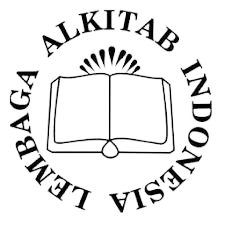The advancement of digital technology has enabled freedom of expression and widespread dissemination of ideas, especially in religious and theological issues. One issue that has arisen is the question of the existence of evil spirits in statues. However, to understand this issue theologically and contextually, it is necessary to study the Bible historically and literary, one of which is through the book of Isaiah chapter 44. In it there is a polemic that is not only relevant in its time, but also addresses the faith of today's people.
Statues: Not Just Visual Objects,
In ancient traditions, statues are often associated with the practice of idolatry. However, not all statues inherently mean worship or have spiritual properties. Statues as works of art only become religious symbols when associated with a particular belief system. In the context of Isaiah 44, statues are visual representations of Babylonian gods such as Marduk, Bel, and Nebo.
Isaiah 44:9–20 satirically criticizes the process of making statues and calls them the work of man, not a manifestation of a true divine entity. For example, in verse 13 it says that “the carpenter stretches out the measuring line,” which implies that the statue is a human creation, and therefore not worthy of worship.
Deutero-Isaiah and the Context of Exile
The second part of Isaiah (chapters 40–55), called Deutero-Isaiah by scholars, was written in the context of the exile of the Israelites to Babylon. In this context, the people were experiencing a profound crisis of faith. The temple had been destroyed, the king and nobles had been taken captive, and the people were in a foreign land with a dominant local belief system. In the Babylonian narrative, their military victories were interpreted as victories of their gods over the LORD.
Marduk, the chief god of Babylon, was believed to have created the world through a cosmic struggle. This myth countered the Israelite creation story, which emphasized a loving and willful divine order. This is where Deutero-Isaiah comes into play, asserting that political defeat does not mean defeat for God.
Theological Caricature of the Babylonian God
Isaiah’s caricature of the process of making statues became a rhetorical method for challenging belief in the Babylonian god. In Isaiah 44:14–17, it is described that some of the cut trees were used as fuel to cook food, and some were carved into statues, then worshipped. This criticism aims to show the irony and illogicality of the practice of worshiping artificial gods.
However, scholars also realize that in the Mesopotamian tradition, statues were not worshipped as mere wood or metal, but were believed to be temporary residences of gods after a purification ceremony or “ensoulment” (giving of a soul). Ancient Babylonian texts even mention that craftsmen denied their role as creators of statues, because it was believed that the gods themselves gave them their form.
Thus, Isaiah’s caricature is a theological and apologetic polemical method: defending Israel’s belief in a God who cannot be represented by inanimate objects, and who is not confined to buildings or political history.
Are There Evil Spirits in Statues?
The question that has been raised on social media pages, about “Are there evil spirits in statues?”, is not found explicitly in the biblical text. The book of Isaiah does not state that evil spirits inhabit statues, but rather criticizes that statues have no life at all. Statues are inanimate objects that are unable to save, see, hear, or speak (cf. Isaiah 44:9–11; 18–20).
The question of evil spirits is more a reflection of contemporary culture or even certain spiritualistic assumptions that do not always have a basis in biblical theology. The main emphasis in Isaiah is that only the LORD lives, who created the heavens and the earth, and who holds the history of the nations.
Affirmation of Faith in the Midst of Crisis
The main message of Deutero-Isaiah is not about statues alone, but about affirmation of faith. Even though the people of Israel experienced national destruction, God remains sovereign and at work in history. The phrase "I am the first and I am the last; there is no god besides Me" (Isaiah 44:6) is a firm monotheistic confession, which transcends all forms of polytheism and syncretism.
The prophet in exile was not only a religious figure, but also a “political observer” who offered a new vision: that God was not constrained by time and space, and that Babylonian rule did not cancel His presence. Thus, the response to a crisis of faith is not to be tempted to worship statues or even suspect statues, but to reaffirm belief in a living God who cannot be compared to human creation.
How do you interpret symbols and visual forms in worship?
- COPY ON IMAGE. Advances in digital technology have enabled freedom of expression and the widespread dissemination of ideas, especially in religious and theological issues. One issue that has arisen is the question of the existence of evil spirits in statues. However, to understand this issue theologically and contextually, it is necessary to study the Bible historically and literary, one of which is through the book of Isaiah chapter 44.
- Statues: Not Just Visual Objects. Statues as works of art only become religious symbols when associated with a particular belief system. In the context of Isaiah 44, statues are visual representations of Babylonian gods such as Marduk, Bel, and Nebo. Isaiah 44:9–20 satirically criticizes the process of making statues and calls them the work of man, not the manifestation of a true divine entity.
- Deutero-Isaiah and the Context of Exile. The second part of the book of Isaiah (chapters 40–55), called Deutero-Isaiah by scholars, was written in the context of the exile of the Israelites to Babylon. In the Babylonian narrative, their military victory is interpreted as the victory of their gods over the LORD. This is where Deutero-Isaiah plays its role, asserting that political defeat does not mean God's defeat.
- Theological Caricature of the Babylonian God. Isaiah's caricature of the statue-making process becomes a rhetorical method to challenge the belief in the Babylonian god. In Isaiah 44:14–17, it is described that a tree that is cut down is partly used as fuel to cook food, and partly carved into a statue, then worshipped. This criticism aims to show the irony and illogicality of the practice of worshiping artificial gods. However, scholars also realize that in the Mesopotamian tradition, statues were not worshiped as mere wood or metal, but were believed to be temporary residences of gods after a purification ceremony or "ensoulment" (giving of a soul). Thus, Isaiah's caricature is a theological and apologetic polemical method: defending Israel's belief in a God who cannot be represented by inanimate objects, and who is not confined to buildings or political history.
- Is There an Evil Spirit in the Statue? The question that has emerged on social media pages, about “Are there evil spirits in statues?”, is not found explicitly in the biblical text. The book of Isaiah does not state that evil spirits inhabit statues, but rather criticizes that statues have no life at all. The question of evil spirits is more a reflection of contemporary culture or even certain spiritualistic assumptions that do not always have a basis in biblical theology.
- Affirmation of Faith in the Midst of Crisis. The main message of Deutero-Isaiah is not just about statues, but about affirmation of faith. Although the people of Israel experienced national destruction, God remains sovereign and at work in history. The prophet in exile is not only a religious figure, but also a “political observer” who offers a new vision: that God is not constrained by space and time, and that the power of Babylon does not cancel His presence.
How do you interpret symbols and visual forms in worship?




















